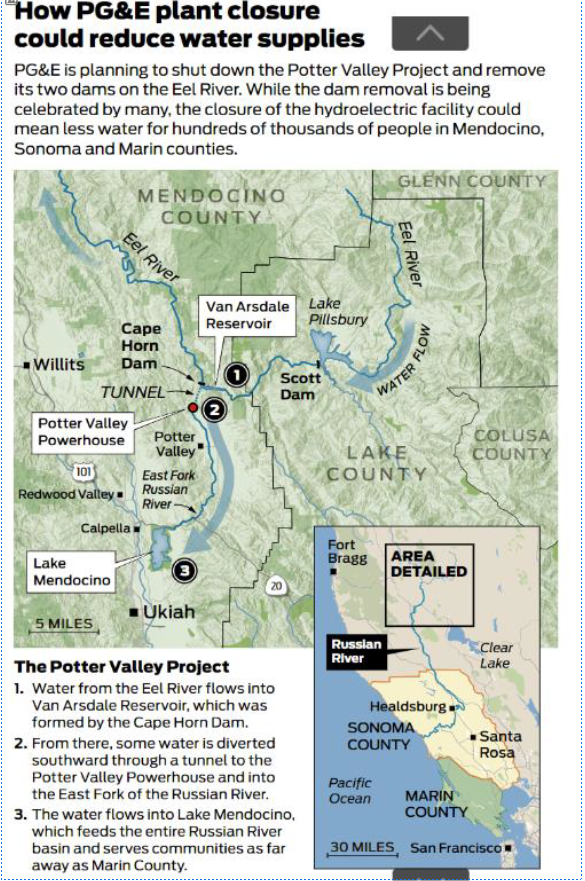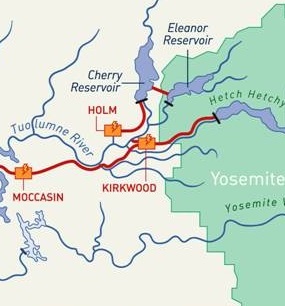In “Eel River’s rebirth requires sacrifice”, San Francisco Chronicle reporter Kurtis Alexander reminds us that dam removals require balancing the benefits dams provide with the harm they cause. Ironically, Scott and Cape Horn Dams were built for hydropower production (some of California’s earliest such facilities) but are now used to augment water supply for Potter Valley farmers and others in Sonoma County.

Diversions have averaged about 48,000 acre-feet over the last ten years. Without water stored upstream in Lake Pillsbury, diversions would only be possible during winter and spring.
The best outcome for the Eel River and its fisheries would be no diversions AND access to expanded spawning habitat above Scott Dam. Potter Valley farmers, however, would like to maintain the ability to divert some of the water. We’ll see what happens as plans for dam removal go forward.

Only the Kirkwood Plant is directly connected to Hetch Hetchy Reservoir.
When Hetch Hetchy is restored, water could still be diverted to San Francisco via the Canyon Tunnel as it leaves Hetch Hetchy Valley. Such a diversion would not make a difference to water supply. Those flows could still be stored or diverted downstream, but would allow roughly 64% of the hydropower currently generated at the Kirkwood Powerhouse to continue. Without the diversion, no generation at Kirkwood would be possible (hydropower production at San Francisco’s Holm and Moccasin facilities will continue with only minor changes).
With continued generation at Kirkwood, the projected loss of hydropower when Hetch Hetchy is restored is 350,000,000 kilowatt-hours – about 5% of San Francisco’s electricity consumption. See Tuolumne Watershed Diversions without Hetch Hetchy Reservoir: Comparison of Interties to Cherry and Don Pedro Reservoirs for more information.
Similar to the Eel River, water supply is the principal issue at Hetch Hetchy and the one that needs to be resolved. A final solution, however, will need to replace lost hydropower as well.
